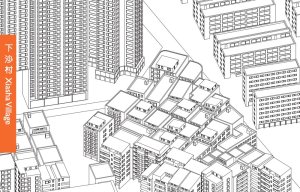Adam Nowek – Celebrating South China’s Urban Villages

Axonometric view of building typologies in Xiasha Village (Image: Villages in the City, edited by Stefan Al)
theprotocity.com. September 2014. Urban informality is hardly a new reality for the world’s cities. The term itself has a young theoretical life, being championed by urbanist Ananya Roy as a lens with which to think about how cities are planned and made without the need to approach an urban planning department. Informal settlements exist in a huge variety of forms, from the gradual occupation of the Torre David skyscraper in Caracas to the built-overnight towers of outer Istanbul, and offer ad hoc solutions for housing, retail, and community space alongside questionable building quality.
The Chinese manifestation of urban informality is the urban village. As Stefan Al, architect and Associate Professor of Urban Design at the University of Pennsylvania, sees it, China’s urban villages bear few, if any, similarities to the favelas of Brazil. “They’re actually fully intertwined, although they look like the polar opposite,” notes Al. “From an economic perspective, the urban villages and the city are completely related. The only reason urban villages exist is the inability of the Chinese government to provide adequate housing for millions of people.”
Read more: http://theprotocity.com/celebrating-south-chinas-urban-villages/